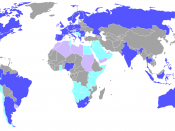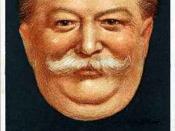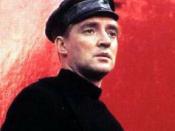Imagine this, a perfect world of complete harmony and justice. There is no wrong, and there is no right. There is only utopia. It might be the perfect place where people want to live, or the place that people dream about. It might even be the picture of the future. However, this Utopian world is revealed to have flaws. It lacks many of the qualities of life that exist today. Thus the Utopian world isn't so Utopian anymore. And the more that is revealed about the world, the more horrible it becomes. Soon, it becomes a nightmare, a world of illusions, of lies. That is the dystopic world that authors such as Bradbury and George Orwell pictures in their books, a world that exists under the image of utopia, and yet to the reader seems like a foreign, inhumane residence dominated by an all-powerful government. George Orwell's 1984, and Ray Bradbury's Fahrenheit 451 depicts two different dystopic worlds.
The settings of both books are different and the characters are unique; however, both of these books are also very similar. 1984 and Fahrenheit 451 are similar dystopic literatures by a common theme of censorship in which the government withholds or censors information, by a similar thread of a totalitarian government running the dystopic world, and by a common knowledge of the truth that the protagonist and the antagonist both hold.
Censorship is a remarkable simple concept: the ability of the government to withhold or change information that passes into the public. All governments have some form of censorship, and some governments have less censorship than others. Yet censorship can also become a difficult concept to grasp, for censorship allows the government to influence how people think. The less censorship there is, the more people begin to think, which according to standards...



Comparing Dystopic Worlds
really great essay the evidence from both books balances well. it shows a clear comparison of both books. its amazing that this is a 10 grade essay. i couldn't have done it better myself.
the finishing sentence " When a government arises to take power without the question or consent of the people, then is it utopia, or chaos and slavery?" that is gold, good stuff to leave the reader to think about the essay.
1 out of 1 people found this comment useful.